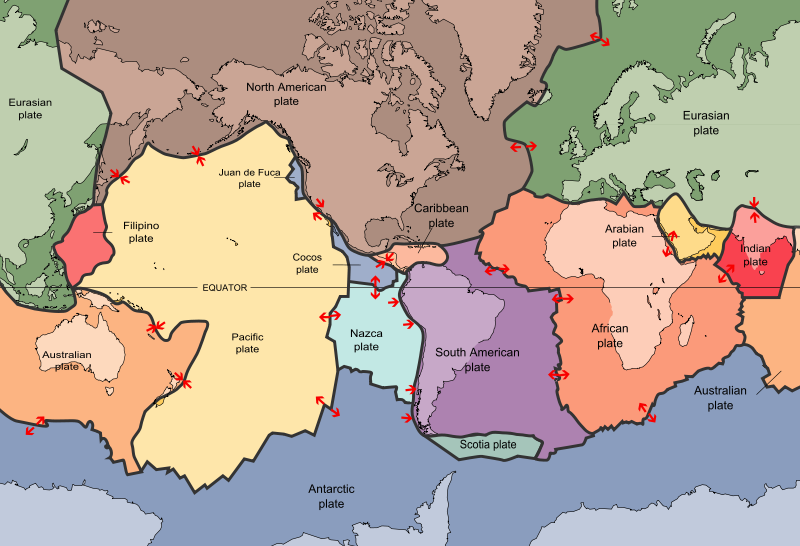<Back to Index>
- Tectonic Plate Indo - Australian Plate
PAGE SPONSOR

The Indo - Australian Plate is a major tectonic plate that includes the continent of Australia and surrounding ocean, and extends northwest to include the Indian subcontinent and adjacent waters. Recent studies suggest that the Indo - Australian Plate may be in the process of breaking up into two separate plates due primarily to stresses induced by the collision of the Indo - Australian Plate with Eurasia along the Himalayas. The two protoplates or subplates are generally referred to as the Indian Plate and the Australian Plate.
Depositional age of the Mount Barren Group on the southern margin of the Yilgarn Craton and zircon provenance analysis support the hypothesis that collisions between the Pilbara – Yilgarn and Yilgarn – Gawler Cratons assembled a proto - Australian continent approximately 1696±7 Ma (Dawson et al. 2002).
The Indian subcontinent, Meganesia (Australia, New Guinea, and Tasmania), New Zealand, and New Caledonia are all fragments of the ancient supercontinent of Gondwana. Seafloor spreading separated these land masses from one another, but as the spreading centers became inactive they fused into a single plate.
Recent GPS measurement in Australia confirms the plate's velocity of 67 mm/yr at 35 degrees east of north. Note also the same directions and velocities for points at Auckland, Christmas Island and southern India. The slight change in direction at Auckland is presumably due to a slight buckling of the plate there, where it is being compressed by the Pacific Plate.
The southeasterly side is a complex but generally convergent boundary with the Pacific Plate. The Pacific Plate subducting under the Australian Plate forms the Tonga and Kermadec Trenches, and the parallel Tonga and Kermadec island arcs. It has also uplifted the eastern parts of New Zealand's North Island.
The continent of Zealandia, which separated from Australia 85 million years ago and stretches from New Caledonia in the north to New Zealand's subantarctic islands in the south, is now being torn apart along the transform boundary marked by the Alpine Fault.
South of New Zealand the boundary becomes a transitional transform - convergent boundary, the Macquarie Fault Zone, where the Australian Plate is beginning to subduct under the Pacific Plate along the Puysegur Trench. Extending southwest of this trench is the Macquarie Ridge.
The southerly side is a divergent boundary with the Antarctic Plate called the Southeast Indian Ridge (SEIR). The westerly side is a transform boundary with the Arabian Plate called the Owen Fracture Zone, and a divergent boundary with the African Plate called the Central Indian Ridge (CIR). The northerly side of the Indo - Australian Plate is a convergent boundary with the Eurasian Plate forming the Himalaya and Hindu Kush mountains.
The northeast side of the Indo - Australian plate forms a subducting boundary with the Eurasian plate on the borders of the Indian Ocean from Bangladesh, to Myanmar (formerly Burma) to the south - west of Indonesian islands of Sumatra and Borneo.
The subducting boundary through Indonesia is not parallel to the biogeographical Wallace line that separates the indigenous fauna of Asia from that of Australasia: the Eastern islands of Indonesia lie mainly on the Eurasian Plate, but have Australasian - related fauna and flora.